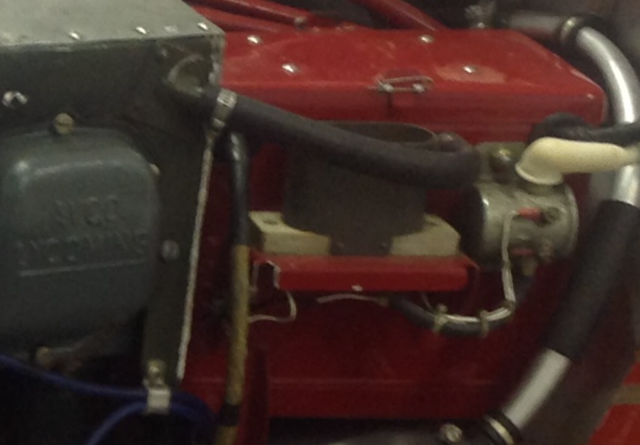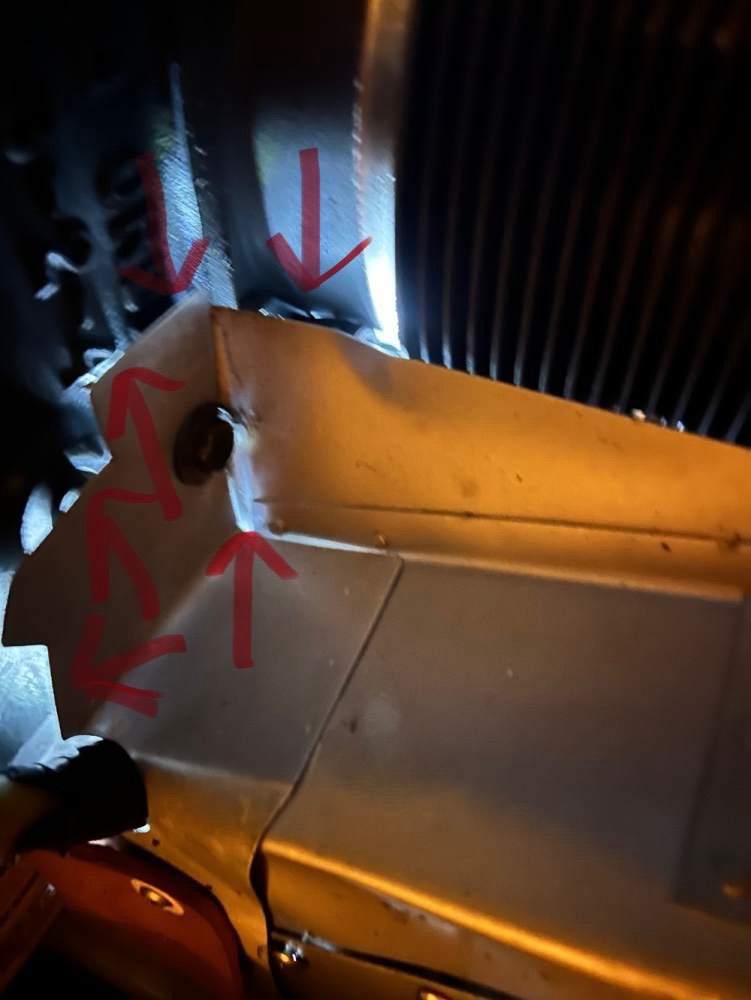-
Posts
5,744 -
Joined
-
Last visited
-
Days Won
24
Content Type
Profiles
Forums
Blogs
Gallery
Downloads
Media Demo
Events
Everything posted by Andy95W
-
I was wondering if anyone here had any experience in removing the speaker in an early Mooney, 1964 and earlier with the old style headliner. Possibly @takair or @cliffy? On a related note, does anyone know of a good replacement 4 ohm speaker that will fit (if I can get mine out, of course). Thanks!
-
Dank je wel!
- 1 reply
-
- 1
-

-
The “National Coverage” was simply because it was a slow news week and the 24 hour news outlets had to find something to fill the time (otherwise they couldn’t sell advertising.). Now with other stories to report on and cloudy skies, this is going to go away. It’ll be interesting to see what remains after the stories are gone.
-
I’m 59. My answer is No. Comparing my non-turbo M20C to a non-turbo Cardinal RG- my airplane is faster, flies better, and is less expensive to buy and maintain. The Cardinal is a nice, good looking airplane. But everything is a trade off.
-
https://www.aircraftspruce.com/catalog/avpages/iclothwipes10.php
- 1 reply
-
- 13
-

-

-

-
All that junk on the battery box was an external power plug that was added in the 1990s. It wasn’t wired correctly and I removed it the first time I took out the battery box (ironically, to close up gaps in my doghouse behind the left upper engine mount).
-
-
That’s a lot of not easy work. Yes, I would connect the hose to the box, and then make sure the bottom hose to the cowl flap area is also connected. That will keep the air flowing like it should (plus add to battery cooling). Looking forward to more updates!
-

checking Lycoming oil level? (plus a neat trick for adding oil)
Andy95W replied to AJ88V's topic in General Mooney Talk
It is. The filler neck is just plastic, so if you crank down the safety wire it’ll break off the ear with the safety wire hole. So the tube will loosen 1/4” and get stopped by the safety wire- which then causes more wear to the ear. So the best thing is for people to simply not over tighten the dipstick. There’s no reason to do so, it won’t come out in flight, and even if it did the oil still couldn’t get out. -
That tube is supposed to be connected to the battery box with a rubber hose attached to a fitting. Your battery box fitting might be missing. The original idea was to pressurize the battery box in order to ventilate corrosive battery acid fumes out the tube at the bottom drain through another rubber tube to the cowl flap area. Not so important nowadays with sealed batteries, but should still be connected for cooling.
-

Rough engine at idle on initial startup
Andy95W replied to gtsio520's topic in Engine Monitor Discussion
Don nailed it- your engine (#2 cylinder, specifically) is showing classic signs of an exhaust valve just starting to stick. It won’t get better, Marvel Mystery Oil might help but doubtful. The only real cure is to ream the exhaust valve guide IAW the Service Bulletin. If it’s not done, it will get worse. Eventually it will stick the valve so badly there’s a good chance it’ll bend the pushrod and the shroud. At that point, you’ll need a cylinder overhaul. The EGTs spiking on a single magneto is completely normal. That happens because with only one spark plug firing, not all the fuel is burned in the cylinder. Some of it is still burning during the exhaust stroke so the EGT probes show the increase. -
That’s different from my FSDO’s guidance during IA seminars. Not a big deal, I bet a lot of guys don’t do it, but they said to do it because 337s are the only “eternal” record of the aircraft and it’s Type Certificate alterations. (ie., if the logbooks were destroyed or lost.)
-
The reason the Mooney has the push to start is so that you can engage the shower of sparks without engaging the electric starter. Without that feature, you would not be able to hand prop the engine.
-
Mine isn’t like that. The orange baffle seal material could be extended down to seal in that gap nicely and then secured with a pop rivet at the bottom. You’ll find some creative solutions to sealing all the holes. Big pain, but it’s worth it in the long run. Good luck, keep us posted as you continue the progress!
-
Lead in the fuel, plus normal carbon deposits.
-

Fly Safely with Portable Talking RADAR AGL Altimeter
Andy95W replied to HolyMicro's topic in General Mooney Talk
If you don’t like it, why do you bother reading or posting here? -
Kydex works well. Basically, you can use anything that meets the flame resistance requirements. For our CAR3 airplanes, all that means is that the material meets a nationally recognized flame resistance standard, is placarded no smoking, and doesn’t have ash trays. .06 or .08 thickness works good. https://www.usplastic.com/catalog/item.aspx?itemid=125116&clickid=search
-
Hi @Buckeyechuck. Hope your annual is going well. Since you have the cowling off, this would be a good opportunity to take off the top part of the doghouse and look down at the cylinders for holes that can be blocked off. I found a big area behind #3 around the oil pressure adjustment. Also check for the intercylinder baffling (and its tightness) below the cylinders. It’s sheet metal that is between #1&3 and #2&4. You’ve done nice work with the aluminum tape, but to put this in perspective: the tape is sealing a 1/16” gap that’s about 10” long. That’s about 5/8” square. In just the one picture below, you’ve got a 1/2” gap that’s about 5” long- or about 2.5 square inches! The only way to cool CHTs is to get the air to flow through the cylinder fins. Any air that isn’t going through the fins isn’t just detracting from the cooling, it’s actually working against you by also decreasing the pressure differential. It’s a lot of creative work to seal up the air box. It’s definitely worth it in the end. Good luck, and good luck with your annual. Please keep us posted!
-
Oftentimes the -R refers to a “rebuilt” part. I definitely think the carburetor is part of @Buckeyechuck’s problem, particularly in the initial climb phase. IMO, he should get his overhauled to the -M version, or better yet exchange for the 10-4164.
-
Hi @Wingover- when you have time, could you please take a picture of the bottom of your door? (so I can see how you oriented the seal with regard to the slider.)
-
Those were added in 1968, IIRC. My 1967 did not have them, my current 1964 also never had them from the factory. @Mark942 has a 1964 M20E, that won’t have these drains either.
-
Sorry to hear about the relative’s broken hip. Difficult process especially as folks age. Your doghouse is probably in good shape. The difficulty is that there are often big holes that are hard to see and work on. When you get back home and you take off your cowling’s side panels, put a drop light inside the doghouse and turn off the lights in your hangar. Look under all four cylinders for light leakage that isn’t through the cylinder fins. Also look behind the doghouse, particularly where the upper engine mounts are located. There should be large felt pieces that seal up that area, but are often missing or messed up. Finally, put the light just under the prop and look forward under the engine to where the generator and starter are. Additionally- there is supposed to be rubber baffle material attached to the forward part of the doghouse, top and bottom, all the way around the front. It goes inside a small aluminum u-channel on the cowling. All of that rubber material should be present and nice and flexible. Also additionally- are the inter-cylinder baffles still in place below the cylinders? These are sheet metal that extend between the barrels of cylinder 2&4 and 1&3. Engine cooling isn’t really about airflow, it’s about the air pressure differential between the top of the engine (doghouse) and the area under the engine (leading to the cowl flaps). Since it’s a fluid, the air in the doghouse will follow the path of least resistance- which is often big holes around the starter, generator, oil pressure adjustment, and engine mounts. That lowers the pressure differential so less air is being drawn through the cylinder fins. To summarize the problem areas: - upper engine mounts - around and under the oil pressure adjustment - around forward parts of the generator and starter - baffling in the u-channel at the front of the doghouse - inter-cylinder sheet metal baffles below the cylinder barrels - other areas of the doghouse where it fits around the cylinders and case
-
I wonder if there’s a difference in mechanisms between the vintage models and later ones. My M20C latch pins are such a tight friction fit that there is no way -seriously, NO WAY- that it can come open by itself, as long as it was properly closed and fully latched before departure. And since I added an emergency exit pull to mine that only works if it’s unlocked, I’m going to keep leaving mine unlocked but checked (and double-checked) before flights.
-
I did the headliner. It was my 3rd airplane interior and second headliner so I’d call it difficult but not too bad. It’s the kind of job that when you’re halfway through you’ll wish you’d paid someone else. But when you’re done, you’re glad you did it yourself. And there is the chance that if you are conscientious and take your time, you’ll do a nicer job than a shop would do.
-
Those numbers are extremely high compared to my 64 M20C. Most air leaks, I’ve found, are either to the front of the engine or underneath. I added metal and rubber material to close significant holes around the starter and alternator, and also under and behind the oil pressure adjustment, behind and under #3. Another factor could be your carburetor. Some have approved modifications to flow more fuel. Check your carburetor part number on the data plate. If it is 10-3878, it is the lower fuel flow. It should be either 10-4164-1 or 10-3878-M. This would explain your climb CHTs but not cruise. Since yours is a 1962, are your oil cooler lines still routed above the cylinders? That adds a significant amount of heat to the whole system. Later versions of the M20C those lines are routed below the engine to the oil cooler.



